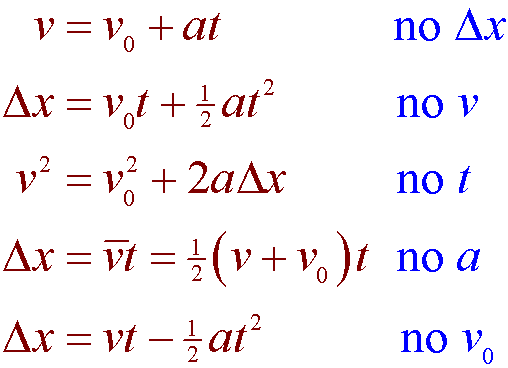Ideal Newton Motion Equation

F net ma Equation 2.
Newton motion equation. For bodies in motion we can write this relationship out as the equation of motion. In this article we will learn about these laws and their derivations along with practice problems. The derivation of the equations of motion is one of the most important topics in Physics.
F net m v-u t Before. These three equations of motion govern the motion of an object in 1D 2D and 3D. Newtons Law of MotionFma expresses a relationship among the forceFon an object themassmof the object and the accelerationaof the object.
Equations of motion of kinematics describe the basic concept of the motion of an object such as the position velocity or the acceleration of an object at various times. F m a F m a. If the functionst givesthe position of the object on the line at timet then the rate of change ofst namelys0t iscalled the velocity and the rate of change.
Newtons second law which states that the force F acting on a body is equal to the mass m of the body multiplied by the acceleration a of its centre of mass F ma is the basic equation of motion in classical mechanics. P mv Equation 3. In its basic form Newtons Second Law states that the sum of the forces on a body will be equal to mass of that body times the rate of acceleration.
Newtons laws of motion underlie all of our theories about the motion of particles. His first law of motion simply states that an object that experiences no net force will continue to move at a constant velocity which means that if it is not moving it will remain stationary and if it is moving it will continue to move at the same rate. The motion of a particle is governed by Newtons second law relating the unbalanced forces on a particle to its acceleration.
The motion of a particle is governed by Newtons second law relating the unbalanced forces on a particle to its acceleration. If more than one force acts on the particle the equation of motion can be writtenF FR mawhere F Ris the resultant force which is a vector summation of all the forces. We shall discuss Newtons Law ofMotion for several special cases in which the object moves along a line.













